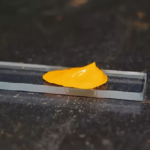As you know, initially even walls do not happen if the room was not subject to repair before, because the difference in only 1 centimeter will be given a strong visual flaw. It is for this that it is important to align the walls under the tile – a fairly simple but laborious process, as a result of which you get a perfectly flat surface of the walls in all planes.
Alignment is customary in two main ways: the preparation of walls with plaster and alignment using drywall sheets (used for significant drops and flaws of the wall).
Alignment of walls for tiles using plaster: process and features
Application of plaster – this is quite simple if you observe the sequence of actions and use conventional measuring tools, for example, leveling or plumbing for vertical leveling. Most of the process is occupied by the preparation of walls. It includes applying notches to a concrete wall to better strengthen future plaster, removing the old paint, cleaning the wall, as well as priming – applying special impregnation, which will significantly increase the adhesion of materials. It is worth noting that these impregnations are different for each material, so we must take this into account when choosing a primer:
Deep penetration primers are used only on porous surfaces (wooden, for example), as well as any others that have increased absorption of the material;
If the walls under the tile are concrete, brick, or from any other material with reduced porosity, then you can use the usual primer;
For plastering drywall, dense types of wood, universal primers can be used;
How to apply plaster to the walls under the tiles exactly
In order for the plaster of the surface to be high -quality, that is, even, it is necessary to install auxiliary means – lighthouses. To do this, it is best to use a regular metal profile, which must be fixed using the solution in the corners of the wall and leveled with a level in the vertical plane, and then install the same profile horizontally. It is in this method that the screed under the tile on the floor is aligned, since the profile is an inexpensive and reusable material that does not lose its properties after being in cement, it easily fits and absolutely even. It is worth taking into account one main nuance when laying tiles, both on the floor and on the wall – to level the surface in the length of the profile is extremely small, since the main problem is to align the profile in breadth. Often leveling in these planes takes more time than laying tiles and applying a solution/plaster.
A special metal angle is installed on the corners, which is completely hubbled (necessary in order to prevent the subsequent shedding of angles with physical exposure). After all the surfaces are installed in terms of level or laser leveling, you can apply plaster, aligning so that it is flush with profiles.
Preparing the walls for tiles with plaster will take a little time, as it is applied quickly, and begins to dry after 40-50 minutes. At this moment, it is worth taking a metal trapezoidal rail, which to extend all the irregularities and divorces that turned out as a result of applying the plaster to the wall surface. Do not try to level all the stains and traces of the spatula on the wall while applying the plaster – this is a waste of time and nerves, it is better to wait until the moment of grasping and easily smooth out everything.
Leveling walls under the tiles of drywall sheets
If the difference on the 1st wall in a horizontal or vertical plane exceeds 5-7 cm, then it is customary to use a drywall sheet to align the surface, since the consumption part for plaster significantly exceeds the cost of profiles and a sheet of GKL. The sheet is attached using a conventional metal profile, aligned in level, impregnated with a primer and plastered by a minimum layer of 2-3mm. Then there is a procedure for rubbing divorces.
How to save on materials and work when leveling walls for tiles
Instead of the “profile beacons” you can use a regular nail with a thread or a felt-tip pen, if you already have a minimum experience in plaster walls, subsequent irregularities can already be leveled with general grinding at the beginning of grasping;
You can plaster the surface at 3-4mm, if this is not enough, it will be cheaper to install GKL, and there is less hassle;
You can use the usual cement-sand plaster if you have a concrete or stone wall;
When impregnating wooden and porous walls, it is better to stand a pause in several hours, even better a couple of days so that the first layer froze and prevents subsequent absorption-so save on 2-3 layers of impregnation.





